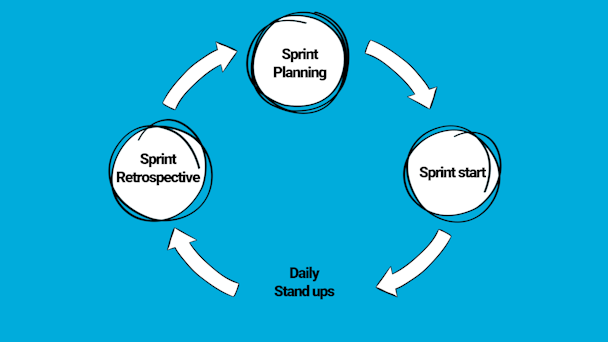Agile management: moving fast but not breaking things
What image does the word ‘agile’ conjure up for you? Perhaps those latest videos of gymnast Simone Biles performing gravity-defying twists and turns. Or in a more business context, maybe it brings to mind Zuck’s ‘Move fast and break things’. For the most part, the impression is that agile seems to excite a young, dynamic, digital workforce and strikes fear into the hearts of the C-suite who anticipate nothing but chaos and waste.

The agile movement cycle - bending without breaking
Agile management can mean a few things but none of them involves stuff getting broken. Born from software development processes, it actually has a lot to teach marketing as a whole but it’s a great place to start when you’re in the process of delivering your marketing technology projects.
In the Process and Operations part of Martech Alliance’s 4Ps of Marketing Technology framework, the agile methodology is typically laid out as:
- Responding to change, rather than a plan
- Rapid iteration not large-scale campaign
- Testing and data versus following the rules
- Small experiments instead of big bets
- Individual iterations, not one size fits all.
It’s important to clarify what we mean by responding to change, rather than a plan. That doesn’t mean no plan. It means having a structure but being open to the impact of conditions around you. Instead of ploughing on regardless because the plan says so, you have the wit and energy to revisit and revise. This not only stops you driving headlong into bad decisions but opens you up to new possibilities.
The other misapprehension is that agile means throwing caution to the wind; that all sense of governance and assurance fly out the window in favour of speed and rebellion. That’s simply not the case. For agile to work, there has to be the same level of responsibility and accountability as any other management method.
This boils down to, knowing who does what, why and when. We think this is best expressed in the RACI matrix – a way of defining responsibility across a business to keep everything on the straight and narrow. RACI is one of those nifty little acronyms (because there aren’t enough of those knocking about) and it boils down to:
- Responsible – who is assigned to do the work
- Accountable – who makes the final decisions and has ultimate ownership
- Consulted – who must be consulted before a decision or action is taken
- Informed – who must be informed that a decision or action has been taken.
It can’t be over-stated – agility is about responding to the conditions and taking action in the most efficient, effective way, not throwing caution to the wind. Failure to plan is planning to fail as they say. Making critical decisions on the fly without involving the right people can be a recipe for chaos, if not disaster.
Agile isn’t do or die when it comes to implementing martech. There are going to be some companies or situations or compliance requirements where taking a more traditional, long-form approach is appropriate. But by cutting the chaff – some meetings just don’t need a boardroom and 40 minutes of everyone’s time from office junior to CEO – agile methodology gets the right decisions made fast.
Content created with:

MarTech Alliance
TLDR: A learning solutions business; marketing technology events, courses & resources.
At MarTech Alliance we love a good Gameboy, or floppy disc as much...
